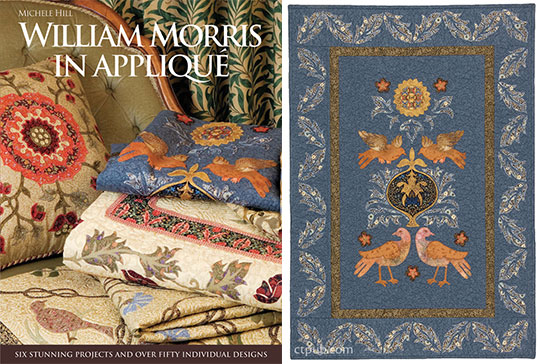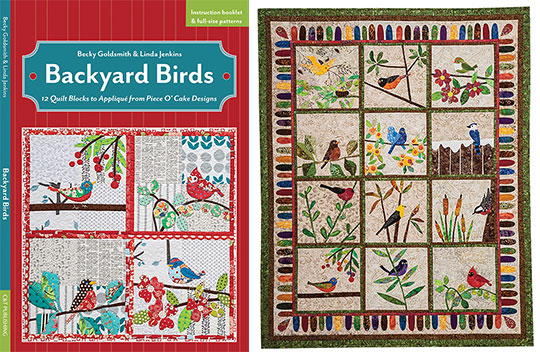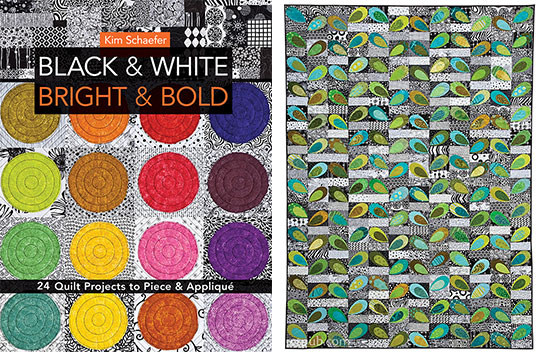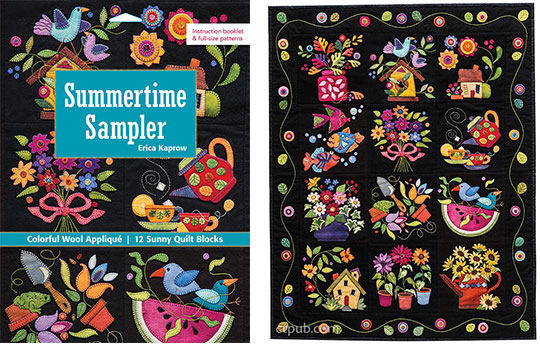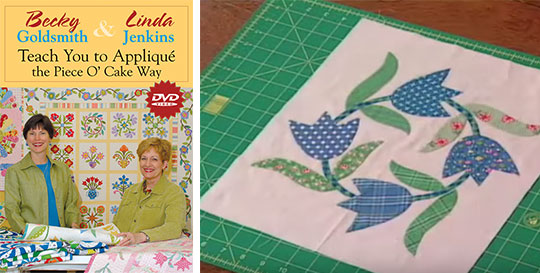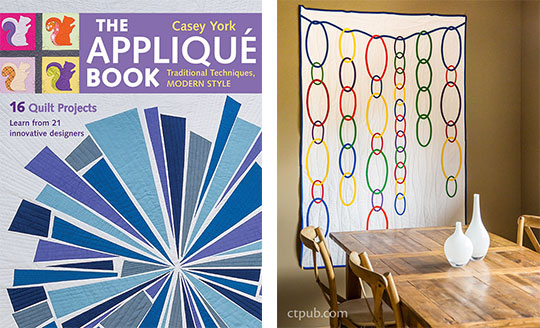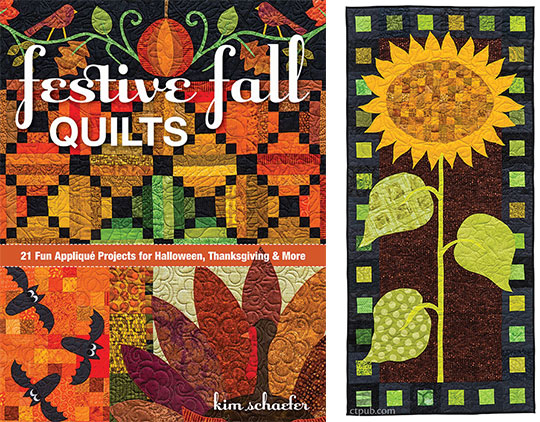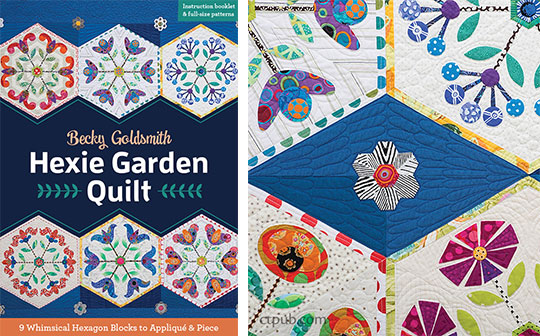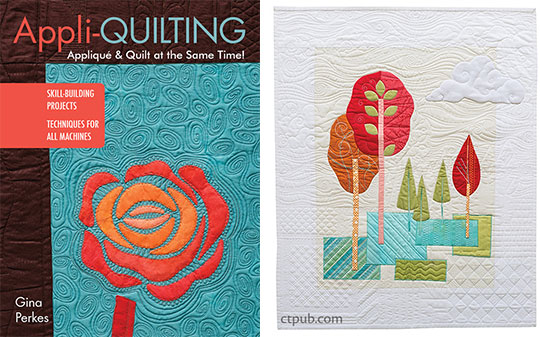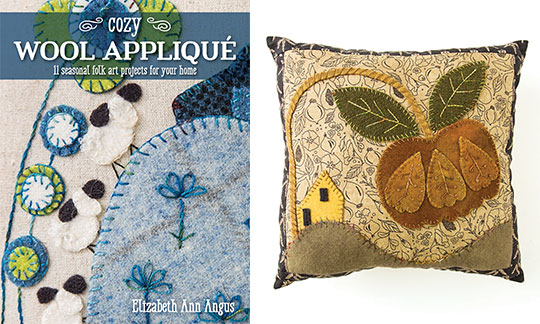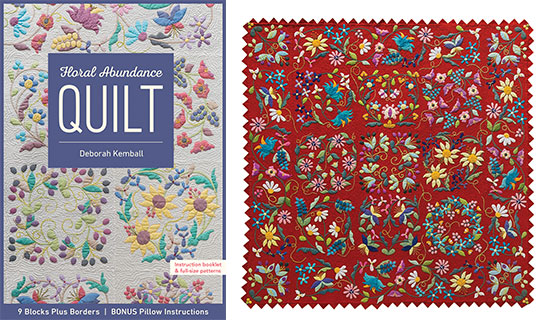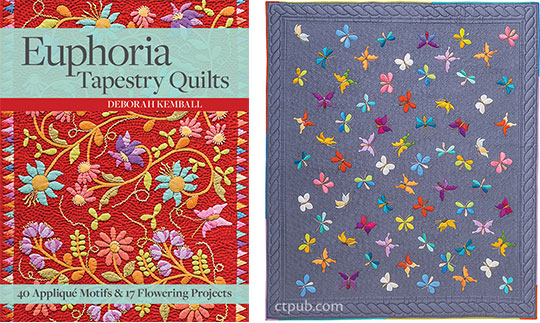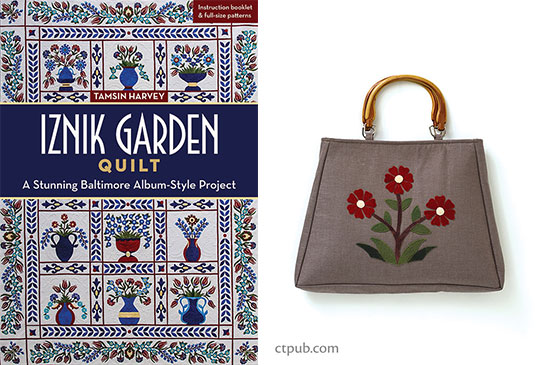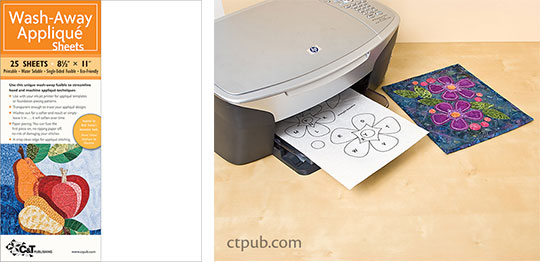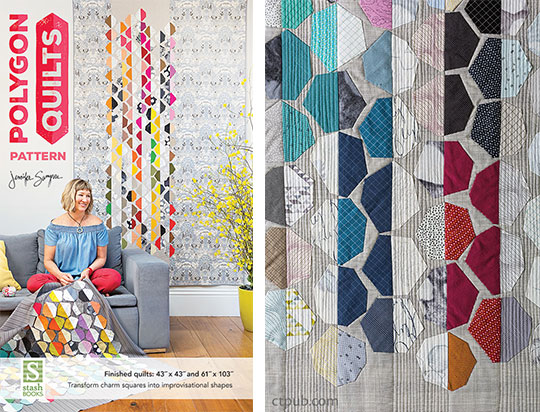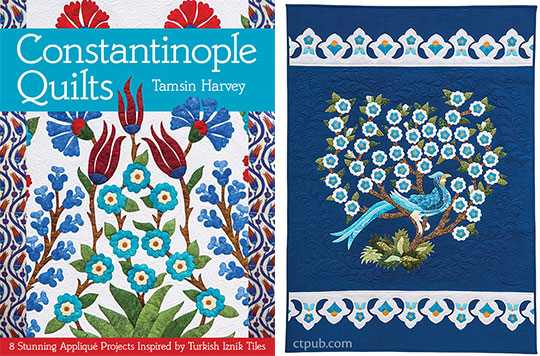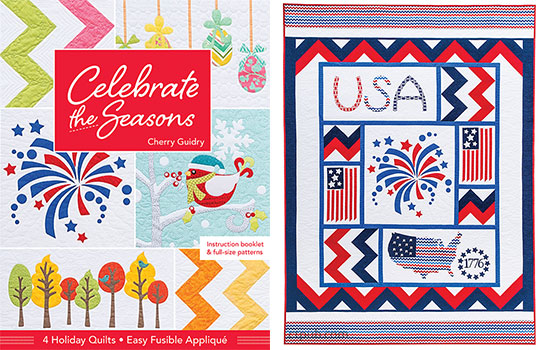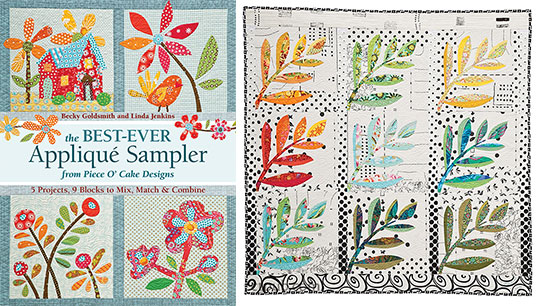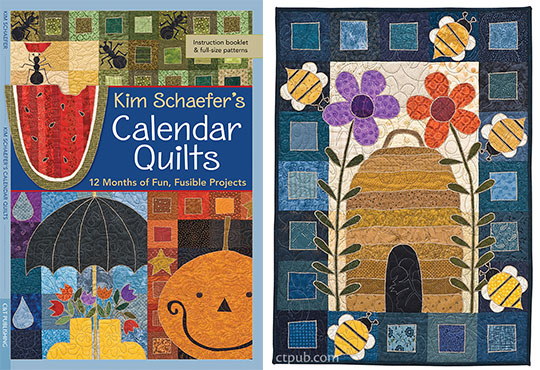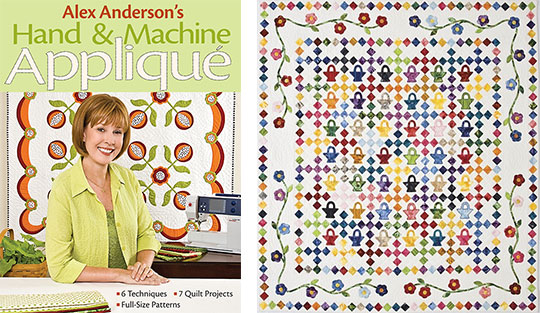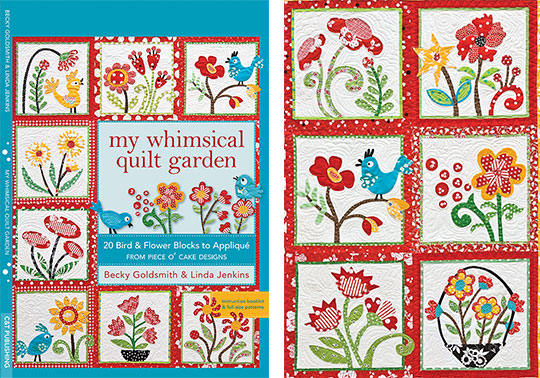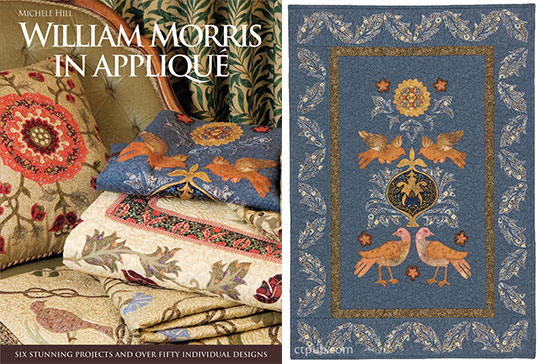
Spotlight on Appliqué Titles
Share
This September, we're turning the spotlight on appliqué! One of the things I love the most about appliqué is the vast variety in styles that can be created with this simple technique, from modern abstract shapes to highly detailed quilts that look like still life paintings. Today we'll share some tips and tricks from our favorite appliqué books (and a few products!). Plus, we're offering 25% off all the featured titles until Saturday! Scroll down to the bottom of this post for the 25% off promo code.
William Morris in Appliqué: 6 Stunning Projects and Over Fifty Individual Designs
Avoid using water-soluble markers to mark your appliqué designs. The heat from theiron when fusing the pieces, may cause the marked lines to become permanent.
Backyard Birds: 12 Quilt Blocks to Appliqué from Piece O' Cake Designs
Eyes, Beaks, and Legs: The birds’ eyes can be embroidered or painted. Linda used #16 perle cotton for embroidering the eyes and black and white permanent markers for painting them. The beaks were appliquéd and the legs embroidered.
Black & White, Bright & Bold: 24 Quilt Projects to Piece & Appliqué
A lightweight paper-backed fusible web works best for machine appliqué. Choose your favorite fusible web and follow the manufacturer’s directions.
Summertime Sampler: Colorful Wool Appliqué • 12 Sunny Quilt Blocks
Note: Overlapping patterns
I drew the patterns as the appliqué appears, not showing hidden layers. If the pieces appear layered, don’t cut away the area behind the top pieces. When you stack the shapes, the layering will add depth to your finished appliqué.
Becky Goldsmith & Linda Jenkins Teach You to Appliqué the Piece O' Cake Way DVD
Watch the trailer for this DVD below!
The Appliqué Book: Traditional Techniques, Modern Style • 16 Quilt Projects
NOTE: Never put printable freezer paper through a laser printer or photocopier, both of which use heat and will make a sticky mess of the paper.
My Cozy Village: 9 Quilt Blocks to Appliqué & Embroider
Tip: If you wish to hand quilt your quilt, consider cutting away the background fabric behind the landscape to reduce bulk and make your hand quilting easier.
Festive Fall Quilts: 21 Fun Appliqué Projects for Halloween, Thanksgiving & More
Note: If you are going to have your top quilted by a longarm quilter, contact the quilter for specific batting and backing requirements.
Hexie Garden Quilt: 9 Whimsical Hexagon Blocks to Appliqué & Piece
Tip: Audition Everything
Don’t stop the audition process with the blocks. Put the setting triangles and borders on the wall, as well as the fabric for the English paper pieced flowers. All of the parts of the quilt work together, and it is important to get it right before you begin sewing.
Tip: Fraying Effect
To accentuate the fraying effect, stitch away from the edge and then snip the fabric up to the stitching line.
The Magical Unicorn Quilt: Appliqué a Playful Projects, 5 Sizes from Wallhanging to Queen Bed
Tip: Cut As You Go
I placed appliqué shapes on my design wall as I worked so that I could see how the fabrics looked together.
Cozy Wool Appliqué: 11 Seasonal Folk Art Projects for Your Home
Tip: Give It Steam
Use plenty of steam when adhering fusible web to wool. The wool will not shrink or be affected by the steam.
Sweet & Simple Wool Appliqué: 15 Folk Art Projects to Stitch
NOTE: Blocks containing appliqué should be trimmed to size after the appliqué is completed.
Elephant and I Quilt and Pillow Pattern
NOTE: Shorten the stitch length to 1.2–1.5, which will make the foundation paper easier to remove later.
Floral Abundance Quilt: 9 Blocks Plus Borders, Bonus Pillow Instructions
TIP: Keep your templates for flowers and flower centers in labeled ziplock bags, and you will be able to reuse them.
Euphoria Tapestry Quilts: 40 Appliqué Motifs & 17 Flowering Projects
TIP: To trace circles and ovals easily, pay a visit to your local arts and crafts store to buy circle and oval templates. All my circles and ovals are standard template sizes and easily matched. It’s easier to draw perfect circles from a template than to trace them freehand.
Iznik Garden Quilt: A Stunning Baltimore Album-Style Project
Note: If you use a thicker thread, such as a 40- or 30-weight thread, it will be more visible around the appliqués and will be more of a feature than the fabric pieces. And in the thicker stitching it can be difficult to hide errors (not that we make those!).
NOTE: Sheets can be fused to fabric for appliqué or stitched to fabric for foundation piecing.
JENNIFER’S NOTE: I started by using a special fabric appliqué glue stick, went through $30 worth of refills, and said, “To heck with that!” So I am recommending an inexpensive school glue stick. It is a little bulkier to handle, but this isn’t fussy work.
Constantinople Quilts: 8 Stunning Appliqué Projects Inspired by Turkish Iznik Tiles
Before you start stitching on your project, sew a small test piece to give you some practice and allow you to get the feel of the stitch. If you are not happy with the result, try changing the length or width. Test it out and keep changing the settings until you find a suitable stitch setting.
Celebrate the Seasons: 4 Holiday Quilts • Easy Fusible Appliqué
Tip: It’s a good idea to stabilize your background fabric before adding appliqués. Cut the background fabric about 1 ̋ larger than indicated and spray with starch, saturating the fabric so that when pressed dry, it is as stiff as paper. Fuse and stitch around the appliqué pieces; then cut the background block to the size in the project directions.
Even Better! When your blocks are on your design wall, you can see how they fit together in the quilt. But after you take them off the wall, it can be hard to remember which block goes where. If each block is identical, this isn’t a problem. But if the blocks are not identical, you need an easy way to get them back into place in the quilt.
This is what we do: When the blocks are on the design wall in their final position, we number the background in the upper right corner. This number replaces the X as a registration mark. You can then see at a glance how the block is oriented and its position in the quilt. You can put more information at the edge of your background block if you like: the name of the pattern, the date, or whatever is important to you.
Kim Schaefer's Calendar Quilts: 12 Months of Fun, Fusible Projects
Trace and cut a stem and its leaves as one piece to keep them together.
Alex Anderson's Hand & Machine Appliqué: 6 Techniques • 7 Quilt Projects • Full-Size Patterns
Tip: Some quilters reserve a separate iron just for use with their appliqué projects, particularly when these projects involve fusible web or spray starch.
My Whimsical Quilt Garden: 20 Bird & Flower Blocks to Appliqué from Piece O' Cake Designs
Tip: Finger-Pressing
To finger-press, hold the appliqué piece right side up. Using your thumb and index finger, turn the turn-under allowance to the back of the appliqué so that the drawn line is just barely turned under.
Use your fingers to “press” a crease into the fabric along the inside of the drawn line. Good-quality 100% cotton will hold a finger press very well. Do not wet your fingers or use starch or scrape your fingernail along the crease. Just pinch it with your fingertips. Finger-press every edge that will be sewn down.
You can get 25% off all these amazing books with the promo code APP25. Promotion ends 10/2 at 11:59 PM PST.





